Revisions to the manual clarify the value of nursing across all healthcare settings.
By Rebecca Graystone, MS, MBA, RN, NE-BC
In October 2017, the American Nurses Credentialing Center’s Magnet Recognition Program® released the 2019 Magnet® Application Manual, the 12th application manual in the 27-year history of the program. It builds upon the foundation of seminal research conducted in the early 1980s that led to the creation of the program, but it also incorporates contemporary standards that address challenges faced globally by healthcare organizations today.
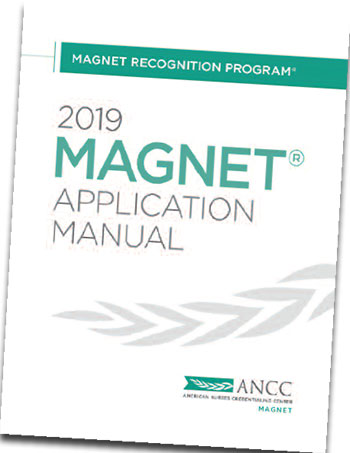

Subject matter experts with a broad collection of perspectives—the Commission on Magnet, professional association members, chief nursing officers, Magnet program directors, Magnet program staff, and others—contributed invaluable insights to inform this latest edition. This collective input, coupled with a rigorous review process, resulted in a nursing credential through which organizations demonstrate the value nurses contribute to patients, families, institutions, and communities. The changes in the 2019 Magnet Application Manual clarify previous standards, reduce the volume of requested information, and expand documentation requirements for the outpatient arena and nursing research.
What stayed the same?
Many elements within the manual have not changed. Some examples include the Magnet® Model, the eligibility requirement for baccalaureate in nursing or higher prepared leadership, the continued focus on empirical outcomes (including those compared against national benchmarks), and innovation, research, and interprofessional collaboration. In addition, the four phases of the Magnet appraisal process—application, submission of written documentation, site visit, and Commission on Magnet Recognition decision—are unchanged. The written documentation and site visit phases require a thorough and comprehensive review by at least three independent, expert appraisers who determine whether the organization meets a threshold of excellence. The Commission on Magnet receives the appraisers’ comprehensive reports for final deliberation and decision.
What changed?
As the 2019 manual continues to raise the bar for excellence, major changes include:
- Clarification of leadership titles and roles. The term “nurse leader” is replaced with “Assistant vice president/Director.” Nurse managers remain unchanged, and documentation provided at the time of application to demonstrate academic preparation of leadership is streamlined. The focus remains on the Magnet-defined function, not the specific title of the RN serving in a leadership role.
- Fewer organizational overview (OO) items. The number of OO items dropped from 20 to 10. Each item represents a foundational element of a Magnet culture and must be present and operational in the applicant organization. Overlapping requirements within the standards led to the removal of some OO items or movement to the standards section.
- Nursing research. Nursing research requirements now include a total of at least three nursing research studies presented in the applicant’s documentation. Two of the three studies must be complete; the third must be open or ongoing. This increase in nursing research studies supports the imperative that nurses in Magnet-recognized organizations are involved not only in evidence-based practices but also in creating new knowledge. Applicant organizations provide the infrastructure and resources to advance many nursing research activities within practice environments.
- Expansion of requirements for outpatient settings. Nine standards require applicant organizations to describe and demonstrate achievement of requirements in outpatient settings. Six of the nine standards require demonstration of empirical outcome data. The expansion into outpatient settings reflects contemporary trends in healthcare delivery and RNs’ critical impact.
- Transition to practice requirement. For the first time, the standards provide applicant organizations the ability to meet a standard by providing evidence of a current, nationally accredited transition to practice program certificate. A copy of the current certificate provided as evidence fully satisfies the standard. Alternatively, if the applicant organization’s transition to practice program is not accredited, three examples must be described and evidence provided to demonstrate integration and effectiveness of the six transition to practice elements for each example.
Achieve excellence
Magnet designation is attainable by healthcare organizations regardless of size, setting, or location. Revisions to the manual provide clarity and relevance to consistently demonstrate the value of nursing care across healthcare settings, populations, and geography. Collectively, the enhancements give organizations an evidence-based, data-driven framework to achieve excellence in processes, structures, and ultimately patient-centered outcomes.
Rebecca Graystone is the director of the Magnet Recognition Program® at the American Nurses Credentialing Center in Silver Spring, Maryland.
Selected reference
American Nurses Credentialing Center. 2019 Magnet Application Manual. Silver Spring, MD: American Nurses Credentialing Center; 2017.
ant1-Magnet Stories-1221

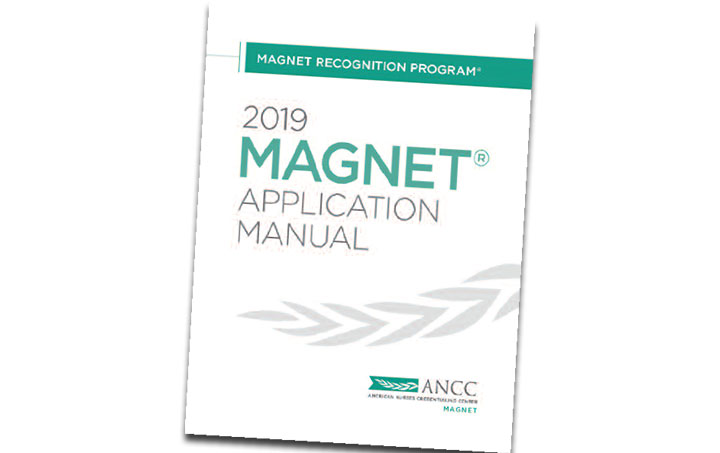



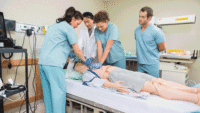
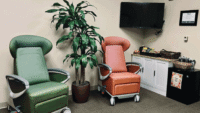
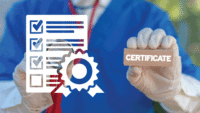











1 Comment.
When I went through nursing school, we were taught that for a hospital to be Magnet, it meant that nurses could count on that hospital to value and prioritize nurses. That the esteem and recognition they gave nurses was unquestionably good. I was taught that I wouldn’t want to leave a magnet hospital. And in my first job, that was true. Now however, I’ve joined another hospital who is seeking and likely to get Magnet status. I came to your website, desperately searching for criteria to write you, explaining why this hospital is just not magnet quality and I can’t wait to leave, but instead, I’m met with quotas the hospital must meet, numbers they must achieve, and simply an alleged opportunity for nursing research. Say nothing for if the hospital will actually implement the ideas of a lowly nurse. As I look through this website, I find that this terrible place will likely “technically” meet all of the needed criteria and I can’t help but think that magnet doesn’t mean anything for nursing anymore, it’s just a corporate gimmick for free publicity and status so the doctors who scream at nurses can feel good about themselves for the public recognition of how “happy” their nurses are.